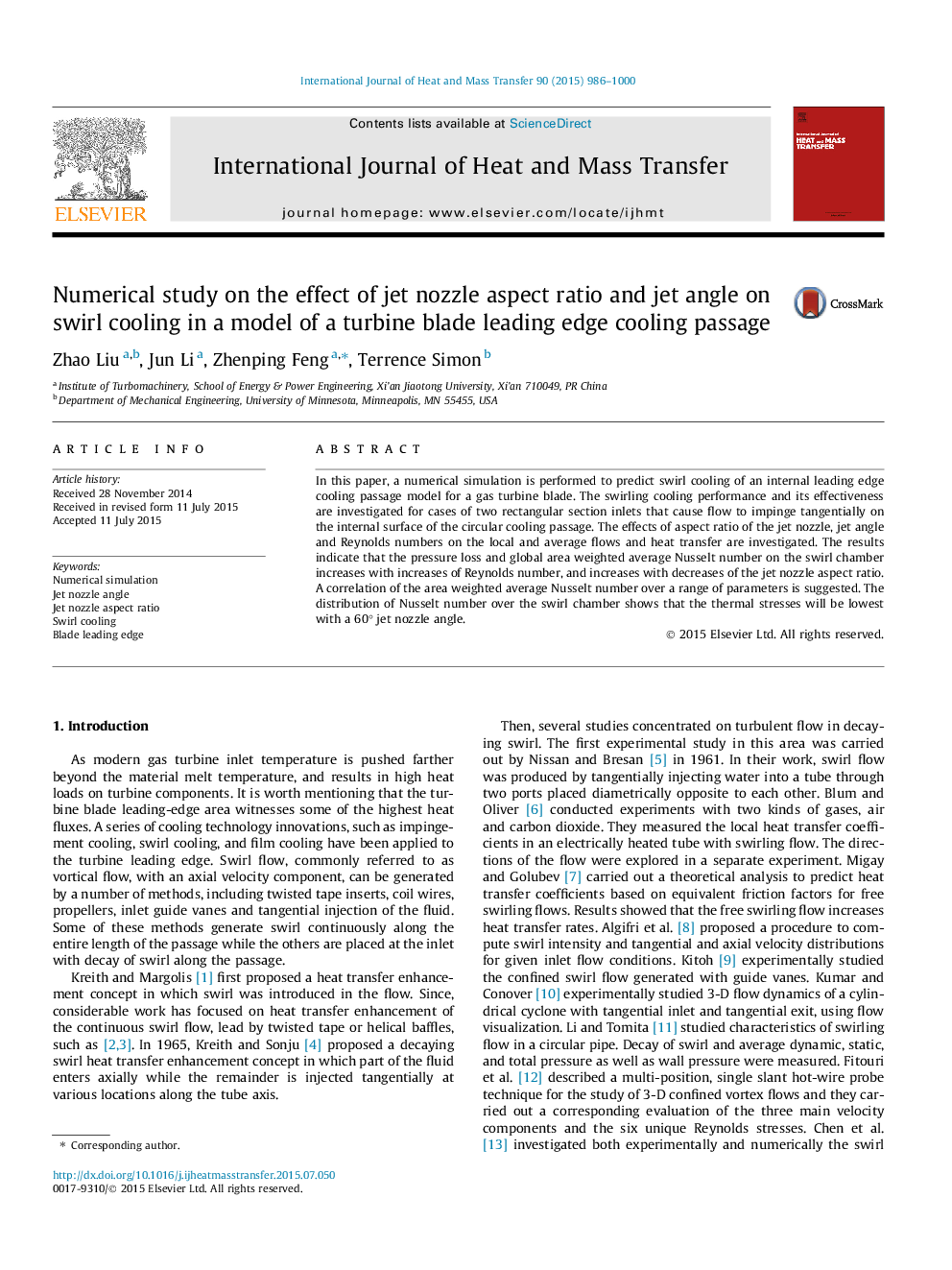| Article ID | Journal | Published Year | Pages | File Type |
|---|---|---|---|---|
| 7056565 | International Journal of Heat and Mass Transfer | 2015 | 15 Pages |
Abstract
In this paper, a numerical simulation is performed to predict swirl cooling of an internal leading edge cooling passage model for a gas turbine blade. The swirling cooling performance and its effectiveness are investigated for cases of two rectangular section inlets that cause flow to impinge tangentially on the internal surface of the circular cooling passage. The effects of aspect ratio of the jet nozzle, jet angle and Reynolds numbers on the local and average flows and heat transfer are investigated. The results indicate that the pressure loss and global area weighted average Nusselt number on the swirl chamber increases with increases of Reynolds number, and increases with decreases of the jet nozzle aspect ratio. A correlation of the area weighted average Nusselt number over a range of parameters is suggested. The distribution of Nusselt number over the swirl chamber shows that the thermal stresses will be lowest with a 60° jet nozzle angle.
Keywords
Related Topics
Physical Sciences and Engineering
Chemical Engineering
Fluid Flow and Transfer Processes
Authors
Zhao Liu, Jun Li, Zhenping Feng, Terrence Simon,
